Specifying parts built in AEC-Q-certified fabs is an inexpensive way of creating exceptionally reliable, long-lasting designs.
Kevin Parmenter, Taiwan Semiconductor USA
Electronic components used in vehicles must have a AEC-Q100 qualification; this qualification means the device has passed specific stress tests and guarantees a certain level of quality/reliability. Of course, reliability is increasingly important in a variety of uses besides those in vehicles. So it may make sense for other applications to use parts manufactured to meet automotive quality and reliability standards.
Clearly, for example, emergency and medical systems leave no room for failure. There are many other applications that must be highly dependable to ensure safety, including industrial lighting, HVAC, merchant power supply and computing/networking applications. And much as with automotive systems, these applications must remain operational under extreme conditions.
One other advantage of AEC-Q parts: Automotive designs usually require an assured source of supply (not discontinuing components) contractually for 10 years or more. This assurance of supply can come in handy for other designs having life spans approaching those of vehicles.
High-reliability markets
It may be useful to review some of the details entailed in AEC qualification tests and what they demand on the part of component manufacturers. Devised the the Automotive Electronics Council, AEC-Q100 is basically a stress test qualification for packaged integrated circuits. It defines four temperature ranges that all start at -40°C and span progressively wider ranges with the highest at 150°C. There are similar standards for passive components (AEC-Q200), discrete semiconductors (AEC-Q101), discrete optoelectronic semiconductors (AEC-Q102), and multi-chip modules (AEC-Q104). Other than radiation testing, automotive qualification is equal to or more stringent than military requirements.
All these standards spell out numerous reliability tests. The entire list of tests is quite long, but the major categories cover accelerated environment stress tests, accelerated lifetime simulation tests, packaging/assembly, die fabrication checks, electrical verification, defect screening, and package integrity.
Specific tests in the above categories include high-temperature storage, powered temperature cycling, and highly accelerated stress tests; checks of wire bond shear and pull, solder ball shear, and lead integrity; die checks for electromigration, stress migration, and time-dependent dielectric breakdown; and, of course, electrical tests. These can include fault grading, ESD and EMC checks, soft error rate and latch-up stress checks, and many others.
The AEC demands that these tests take place on random production parts, not on prototypes or hand-selected samples. Manufacturers must pull samples from three unique lots with a sample size of 77 per lot. Accelerated tests must run for 1,000 hours, and the manufacturing process must demonstrate repeatability; manufacturing parameters must have a CPK—a measure of the process spread and location–of at least 1.67. Specifically, CPK=the distance from the mean parameter value to the nearest spec limit, divided by the distance from the mean parameter value to the process edge.
It is also interesting to contrast expectations for parts in ordinary consumer devices with those in vehicles. Where AEC-Q100 spells out a -40 to 150°C maximum ambient range, consumer goods typically get designed for only 0 to 85°C. Parts destined for consumer goods can have failure rates of 300 ppm and still be considered acceptable; in automotive uses, the acceptable failure rate is zero. Finally, new chips for consumer uses may only be produced for a few years; chips for new car models must still be in stock 20 years later.
Expectations for more robust electronic systems increasingly affect markets where products must operate in harsh environments. In many cases, product manufacturers have extended their warranty periods from three to five to seven, and to now 10 years. In even the best-case scenarios, product failure can bring returns or repairs that nullify any sales profit margins. In the worst cases, unsafe products can put customers at risk.
Industrial lighting is one such market. Service calls can be expensive, for instance, when it takes a union worker and a bucket truck to replace a fixture on a light pole or stadium catwalk. Many outdoor lighting devices see long periods of cold-soaking and hot sunlight, like those placed in potted modules. Yet they are expected to work flawlessly and last for many years.
Likewise, consider the HVAC and appliance market. As with industrial lighting, these systems must operate in extreme conditions. If HVAC systems fail during heat waves or freezing weather, the consequences can lead to safety issues and property damage (freezing water lines, elderly shut ins and such).
The merchant power supply market is another area that requires reliability. These systems are used in a number of mission-critical medical applications. They also power public safety communications systems for fire, police, and EMS that must remain operational.
The computing and networking markets also depend on servers, networking switches and routers that are reliable. In these markets, profit margins are thin and expectations for uptime are high. More crucially, many industrial computing and industrial process control systems can create unsafe conditions on a wide scale if they fail. Again, these systems must continue to operate in electrically and environmentally challenging situations. Medical, avionics, broadcast electronics plus a plethora of other applications must always remain operational.
Automotive-Grade Reliability for max advantage
Ten-year assured supply contracts are normal for automotive suppliers. This situation has created a demand for semiconductor components with longer lifecycles. The automotive industry already uses semiconductors in high volumes, and the electrification of transportation and advent of autonomous driving could make automotive the largest electronics market to ever exist. For this reason, suppliers often qualify entire families of parts to meet the automotive-grade standard, even if they do not label them as such.
Additionally, automotive suppliers see more price pressure than OEMs in many other areas. Semiconductor volumes in the medical industry, for example, are too low to impact supplier pricing. But medical instruments have long life cycles and need an assured source of supply. Ditto for numerous other electronics markets.
The factors at work in the automotive industry lead to this advice: When looking for a part for industrial lighting, safety, or similar applications, consider selecting an “automotive” device of the same type. In most cases, the top device suppliers do not classify parts families, as “military,” “commercial” or “automotive” by running multiple processes. Rather, they find it less expensive to run a single, zero-defects AEC-Q line to meet economies of scale. So, parts may be automotive qualified though they are not labeled as such.

For example, a search for an AEC-Q qualified “diode” on Taiwan Semiconductor’s website will result in the 1SMA4741H device as one option. But note: The part number 1SMA4741 (no “H” in the part number) is identical. The only difference is paperwork. The “H” device is labeled as an “AEC-Q” part, which means it comes with paperwork showing it meets this qualification.
Both diodes were run on the same factory control line and provide the same reliability. In other words, a designer with a non-automotive application can select the 1SMA4741 part and receive an AEC-Q audited part at no extra cost.
Designers selecting parts for non-automotive applications can ask suppliers like TSC to provide downloadable reports, including Mean Time to Fail-Failure in Time (MTBF-FIT), AEC-Q Standard Reliability Qualification reports and Production Part Approval Process reports (PPAPs). These reports prove the part meets AEC-Q standards in accordance with qualification processes and that the SPC controls and audits are set up for a zero-defects result. These reports further ensure that not only will the device meet the AEC-Q testing and qualification requirements but also that production processes align with the requirements of the automotive industry from a quality, change-control and lifecycle perspective.
Questions for suppliers
When specing an automotive-grade device for a non-automotive application, it’s helpful to ask a few basic questions:
1. Can the part be used for automotive as well as commercial applications and, if so, what are the differences in qualification and production between the two?
2. Does the supplier have MTBF-FIT, AEC-Q Reliability and PPAP reports for the devices on their website, or can you obtain copies on request?
3. Can you see an AEC-Q qualification test report on the parts you are considering? (Often qualification is grouped by device family. For example, a specific 5-V Zener part number will be shown on the report alongside every part in its Zener family, ranging from the lowest and highest voltages, i.e., a family qualification.)
4. Does the supplier have a “zero defects” approach, and can they pass an automotive audit? What is the suppliers AQL level presently – it should be in the single digit parts per billion region.
5. Does the supplier sell to other top organizations that audit them on a regular basis to keep their qualifications current? Hint – so you do not have to.
6. Are the supplier’s certifications assigned numbers, proving that they are not counterfeit certifications? Some organizations “borrow” certifications from other websites and simply use adobe editor and modify them and use them as their own.
7. Finally, Is a contact available in your region or country? Some lesser organizations have no personnel in your time zone to talk to or often do not reply to attempts at communications. Field applications engineers and field quality managers in your region are a great place to start asking these questions.
In a nutshell, design engineers can benefit from using a component supplier that lets them select a part identical to one labeled as AEC-Q qualified. There are no downsides to designing a better quality, more reliable system at no extra cost.
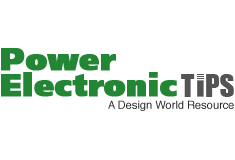
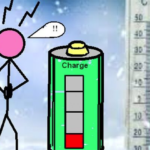
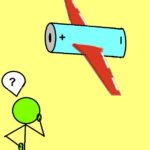
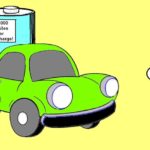
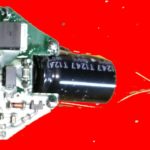
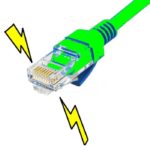

Leave a Reply